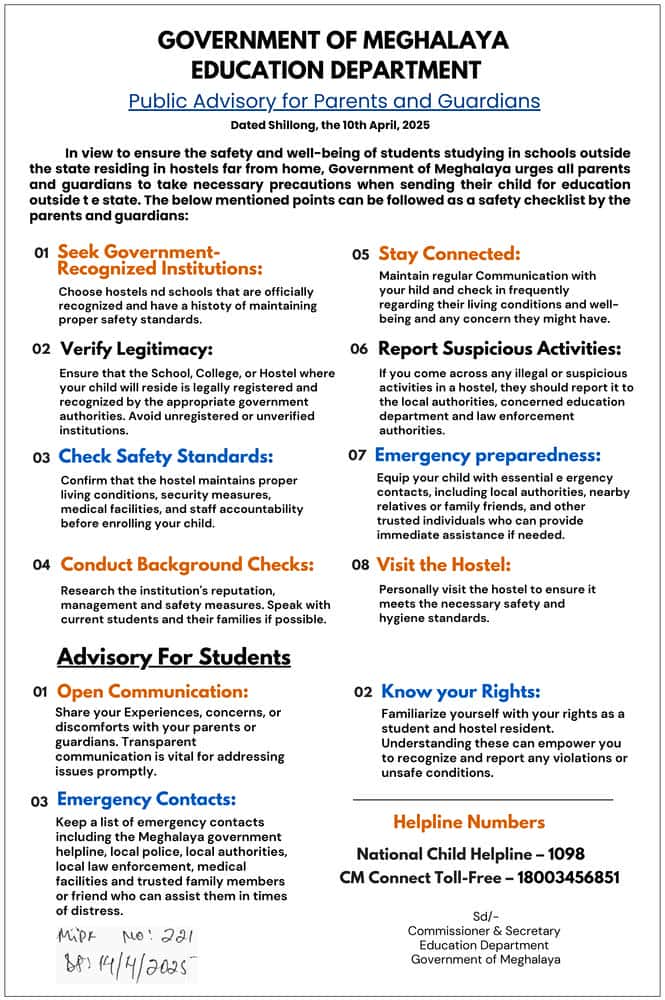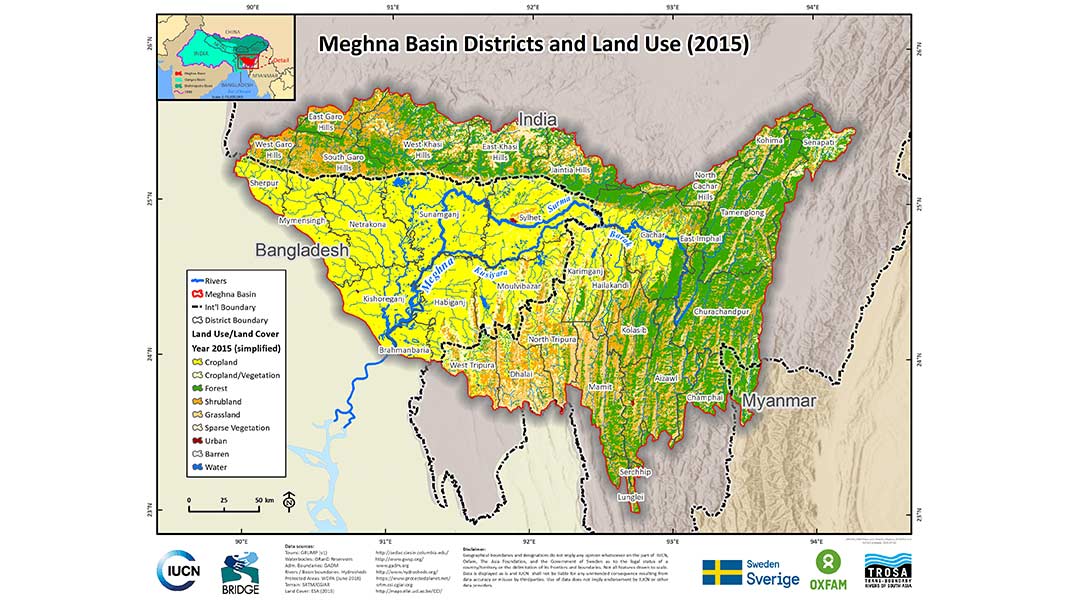Integrated policy approach needed for the management of the Barak-Meghna River Basin

IUCN and Asian Confluence co-hosted a webinar on “Bringing People and Institutions Together for a Living Meghna River,” the final instalment of the Meghna Conversations series. The webinar panel shared their views on implementing governance instruments to build trust and cooperation between India and Bangladesh to benefit all stakeholders in the Meghna Basin.
Meghalaya is the source of many transboundary tributaries of Barak-Meghna river system, such as the Umngot and the Myntdu, flowing from Jaintia hills into Bangladesh. “Although the Indian state of Meghalaya receives the highest rainfall in the world, more than 50% of villages are experiencing water scarcity during the dry season. Recognising the interconnectedness of water and the need to strengthen community engagement in integrated water resource management, the state government created the Meghalaya Basin Development Authority,” said Mr. Sampath Kumar, Chief Executive Officer, Meghalaya River Basin Development Authority, Shillong, India. He shared, “the authority aims to coordinate the actions of different agencies to support local livelihoods. The MBDA has initiated several community-based livelihoods programmes. It aims to engage communities in the management of forests and other landscape based natural resources within the state.”
The webinar presented a comparative review of natural resource management policies in Bangladesh and India, in the Barak-Meghna Basin. The policy review is facilitated by IUCN and conducted by Indian Environment Law Organization (IELO), Delhi, “The Meghna Basin has more than 60 different policy instruments for the management of natural resources, including water, biodiversity, fisheries and forests,” said Mr. Shawahiq Siddiqui, Partner, (IELO), (Delhi) and Supreme Court Lawyer. The review of policies indicates, “In both Bangladesh and India, there is a need for a more coordinated approach to policy and planning. Often, different sectors tend to work in silo, not communicating with others working on similar issues, thus preventing the development of a cohesive strategy at the basin or national levels,” said Mr Siddiqui.
In terms of development of water policies and institutions, the state of Meghalaya is the most evolved among all the northeastern states of India. Meghalaya has created Meghalaya Basin Development Authority (MBDA) with a mandate to facilitate inter-agency cooperation for management of water resources.
Downstream, in Bangladesh, the policies are more evolved, compared to India, and are supported by detailed action plans and institutional setup for its implementation, the example being the Haor Development Plan. On the Indian side, however, most states are in the process of setting up institutions to implement their water policies, and states such as Assam and Tripura have yet to adopt a state water policy.
There is a need to harmonise the natural resources policies, developed by various government agencies working independently of one another. Harmonized regional policies can also strengthen the ecological resilience of the river. Ms. Mahbooba Panna, Joint Secretary, Ministry of Fisheries and Livestock, Government of Bangladesh, Dhaka, highlighted the role of the Meghna in supporting the hilsa fishery, the source of livelihoods for millions and important for the food security throughout Bangladesh. “In 2012, Bangladesh was not able to meet their own demand for the hilsha fish. However, the implementation of ban during breeding season and conservation projects implemented with community engagement has led to a rebound in hilsa population, and earlier this year, the country began again to export hilsa,” said Ms Panna. Hilsa is an endemic fish species and a staple food in Bangladesh and eastern parts of India.
“River governance should be guided by an approach centered on conserving the ecosystems rather than the current anthropocentric approach,” suggested Ms. Syeda Rizwana Hasan, Chief Executive, Bangladesh Environmental Lawyers Association, Dhaka. On the expanding the scope of transboundary cooperation in the Meghan basin,shestressed, “Bangladesh and India Joint River Commission has manly representation from the engineering sector, there is a need to revise the composition to include a broader range of experts from other sectors such as from the civil society.”
Dr. Alejandro Iza, Director, Environmental Law Centre, IUCN Bonn, further underscored the importance of expanding political will to achieve conservation outcomes. Sharing experiences from the shared river basin from South America, he mentioned that often, central governments are unwilling to engage in transboundary cooperation. To achieve this in the context of Meghna Basin between India in Bangladesh, there is an opportunity to engage non-traditional partners, such as local authorities and municipalities. He suggested that, “changes can be enacted when you enhance the technical capacities of people, including the ability to engage meaningfully in a dialogue. There is a need to promote inclusive participation and engagement of stakeholders. People are essential to the solution.”
The webinar series is part of the BRIDGE GBM project, facilitated by IUCN, and funded by the Swedish International Development Cooperation Agency (SIDA) through the Oxfam Transboundary Rivers of South Asia (TROSA) programme, aims to build the water governance capacity of a network of CSOs in the GBM River Basin. Its focus is to strengthen CSO engagement in transboundary water management issues.


Leave a Reply